Omega Speedmaster Professional Moonwatch 'Master Chronometer' With Co-Axial Caliber 3861 Review
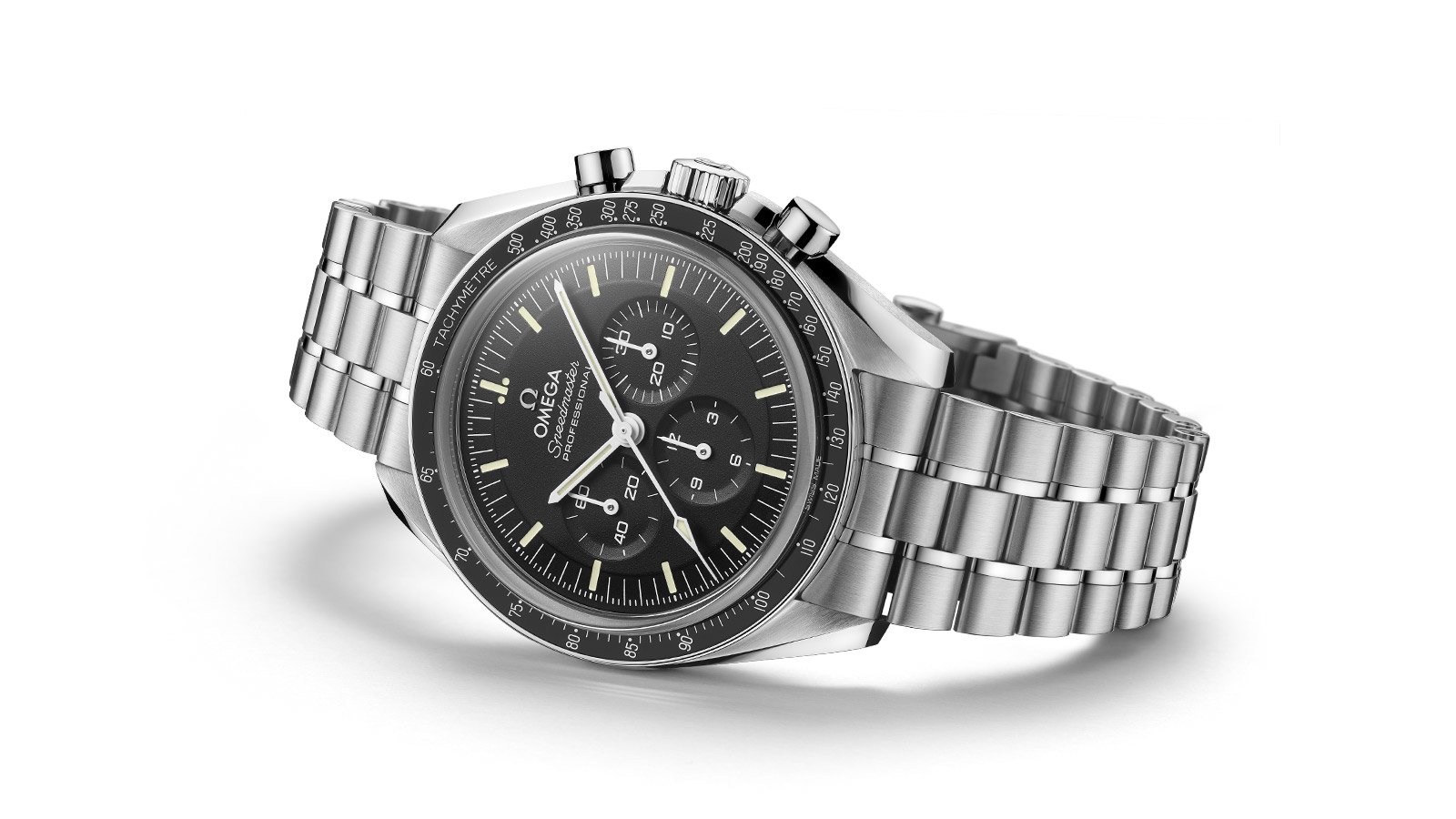
Published: Nov 22, 2021
It might surprise you to know that the Omega Speedmaster has always been associated with the Moonwatch, yet the first model was released back in 1957 and was part of the “Professional” collection. The sporty watch with 1/5th of a second chronograph was introduced to compliment Omega’s role as the Official Timekeeper for the Olympics and didn’t attract the attention it deserved from the aeronautics industry until 1962. The Speedmaster first reached space when it was worn on the wrist of one of America’s very first astronauts in the Mercury 8 mission flight on October 3rd. To do so, the Omega Speedmaster survived a set of intense procedures mapped out by NASA, which included subjecting the prototype watch to adverse drops and rises in temperature, impact, pressure, water, vibration, acoustic noise, humidity, acceleration, decompression and shock. It became authenticated for space exploration and flight-certified. To this day it remains a piece of equipment used by NASA’s astronauts, despite competing against the likes of Longines, Hamilton, Bulova and Rolex among many others.
Many models from the Omega Speedmaster watch range have become collectable icons over the years. The Speedmaster ref: CK2915 is where the story of the icon really begins. This incredibly rare timepiece is considered by serious Speedy aficionados as the holy grail to any Speedmaster collection. Developed in 1957, it can now sell for over 40K euros thanks to its desirable design and its rarity. Since then, models like the ref CK2998, 105.002 AND 105.003, 145.012 and 176.002 have become equally as sought-after. Now Omega has launched a new version of the venerable Moonwatch, equipped with a new motor but boasting all the instantly-recognisable features of the much-loved Speedy.
It was back in 1996 when the Moonwatch got its last movement update. And for a watch as iconic and collectable as the Speedmaster – that’s quite a long time. It was the Calibre 1861 and it debuted in the steel-on-steel ref 311.30.42.30.01.005. Its architecture and make-up were near on identical to the earlier Calibre 861, which rolled out between the years 1968 and 1969. Whilst changing anything about the Speedmaster’s design could be considered by its most dedicated fans as nothing short of scandalous, it cannot be argued that the recent Omega Speedmaster Professional Moonwatch 'Master Chronometer' With Co-Axial Caliber 3861 is certainly a significant update. Whereas the external changes are relatively minor to those who have not studied the ins and outs of one of the world’s most iconic chronograph watches of all time – to devout Speedy collectors, these are huge differences.
A closer look at the Omega Speedmaster Professional Moonwatch 'Master Chronometer' With Co-Axial Caliber 3861
To start – let’s run through the basics of this Speedmaster Professional Moonwatch. It’s a 42mm stainless steel model that houses a master chronometer-certified movement inside its robust profile. A sapphire crystal glass front protects the surface of a black chronograph dial laid out in the iconic styling of the much-loved Speedmaster. These three sub-counters offering precise chronograph functions are framed by an aluminium bezel bearing a tachymetric scale upon its surface. The Calibre 3861 beating inside the watch’s case offers a 50-hour power reserve once fully wound and the watch comes completed on a stainless steel bracelet, securing with a folding clasp. The movement is also resistant to shock and damage caused by magnetic fields, whilst offering an accuracy of 0/+5 seconds per day.
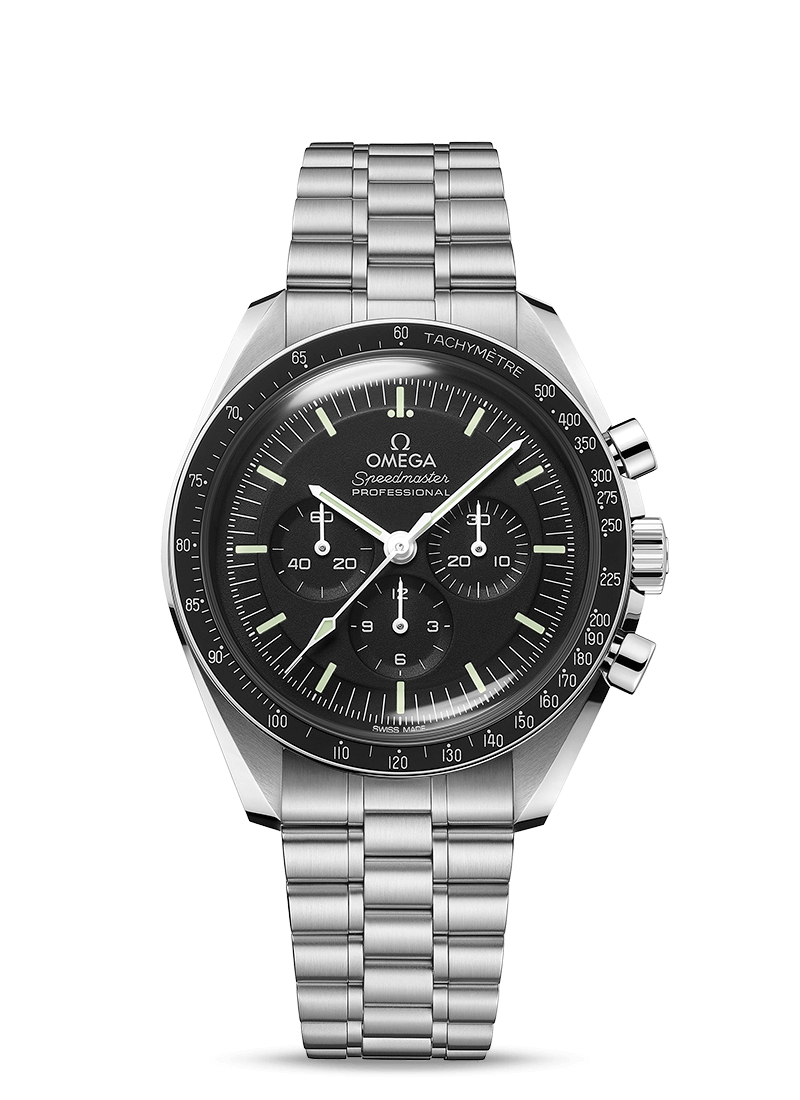
The case
The Omega Speedmaster Professional Moonwatch 'Master Chronometer' With Co-Axial Caliber 3861 features a 42mm stainless steel case with inwardly twisting curved lugs that make the timepiece feel somewhat more compact than its dimensions would initially read on paper. The asymmetrical case features integrated push-pieces at 2 and 4 o’clock on the case that don’t dominate the wrist. The pusher action on the chronograph functions is effortless and smooth, whilst the caseback comes in two options. The "Co-Axial Master Chronometer Professional Moonwatch" and "Flight-Qualified By NASA In 1965 For All Manned Space Missions" wording features on the Hesalite version of this new Speedy watch. The sapphire crystal glass version features the "Co-Axial Master Chronometer" and "The First Watch Worn On The Moon" lettering. On the inside of the top right lug, the Omega globe logo can be seen, while the case metal is engraved into the bottom right lug. Additionally, there are Sedna Gold and Canopus Gold versions available for a resolutely luxurious finish on the wrist.
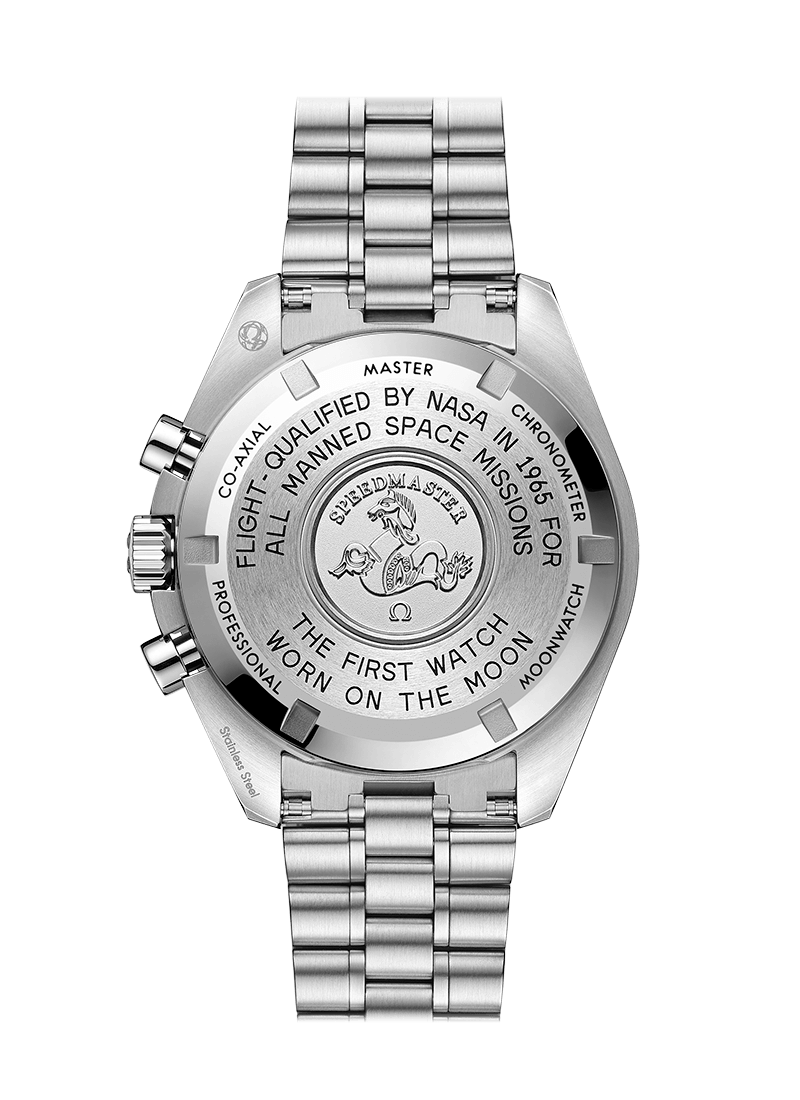
There is a significant throwback to the design of the watch’s original tachymeter bezel. The Omega Speedmaster Professional Moonwatch 'Master Chronometer' features a small dot over the "90" mark. This early reference to Speedmaster models is a detail that will surely appeal to mass Speedy connoisseurs.
The Dial
Also nodding to retro Omega Speedmaster Moonwatch models of the past is the slightly raised hour indices and minute/seconds track on the dial. The painted Omega logo is yet another throwback feature, which works well with a slightly thinned-down case compared to other modern variations. In true Speedmaster style, the new model features a chronograph 30-minute sub-counter at 3 o’clock, a 12-hour sub-counter at 6 o’clock, and a small second sub-dial at 9 o’clock. The counters are surrounded by a Super-LumiNova-treated baton hour track with detailed minute markers against a stepped dial.
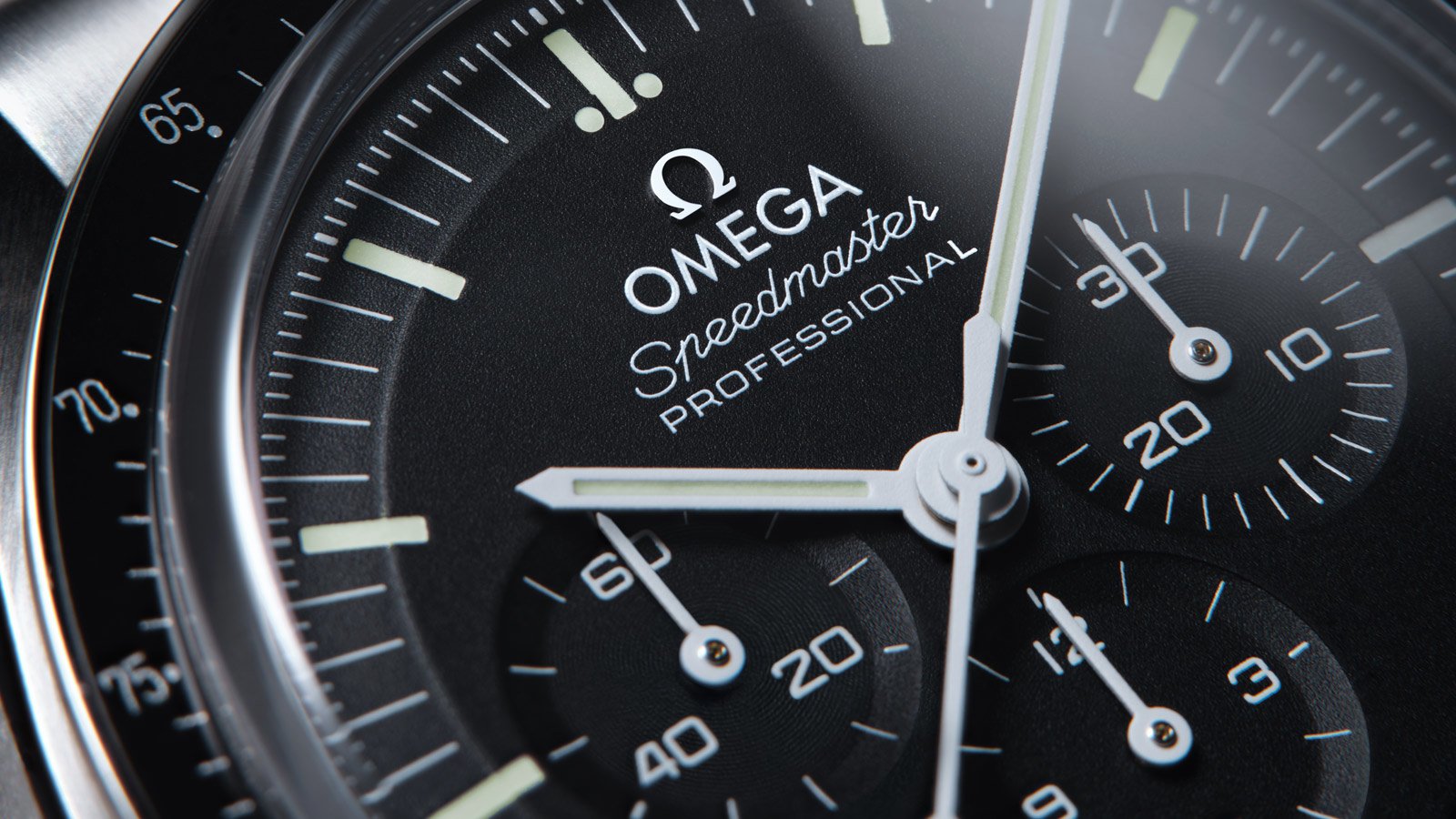
Step Dial
Featuring three subdials, the step dial displays domed minute and seconds hands. As well as an adjusted minute track for the new movement’s frequency.
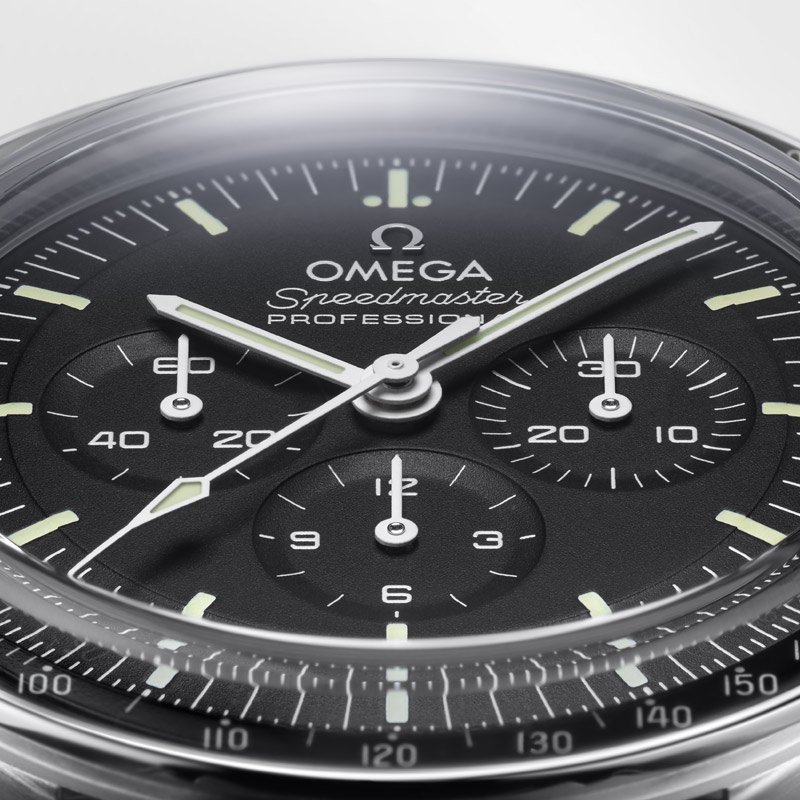
Dot Over Ninety
For the Tru Speedmaster aficionados and those who can appreciate historical details; this Speemasters features the famous dot over 90 (DON) and a dot diagonal to 70. These are on the anodised aluminium bezel ring.

The movement
To be clear, the Calibre 3861 is not entirely new. It first launched in 2019 inside the heart of the all-gold Speedmaster Apollo 11 Anniversary Limited Edition, not to mention two other models since then. It is, however, a clear improvement from the former Calibre 1861, with improved accuracy of 0/+5 seconds per day. It’s also protected inside Omega’s shock-resistant technology and is resistant to the damage caused by magnetic fields reaching up to 15,000 gauss. It also requires a less-frequent servicing and has an increase of 2 additional hours of power reserve, reaching 50 hours in total once fully wound. In addition to this, the Co-Axial movement comprises 26 jewels and beats to the rhythm of 21,600 vibrations per hour.

The three-register chronograph movement is METAS and master chronometer certified. The Co-Axial part of the movement’s name refers to a modern type of watch escapement mechanism that was invented by English watchmaker George Daniels in 1976. It was later patented in 1980 and operates through a system of three pallets that work to separate the locking feature from the impulse. This pushing action differs from the sliding motion of a traditional Swiss lever escapement. As a result, this type of mechanical engineering serves to improve timekeeping efficiency inside the watch.
The Calibre 3861 is also able to withstand fluctuations in temperature, as well as high pressure and rapid decompression. As one of the brand’s most recent additions to the iconic Speedmaster collection, this Moonwatch is primed more than ever for manned space flight. As a tool expected to withstand the knocks and bumps of harsh external factors, this Speedmaster Professional Moonwatch now has a movement that equally supports such situations, thanks to the technical and aesthetical evolution of this engine. In many ways, the Calibre 3861 is a direct descendant of the Calibre 321 which enhances the experience of wearing this watch, both on a practical and emotional level. “Anglage” finishing can be admired in the architecture of the Calibre 3861, along with bevelled bridges, whilst the timing weights are in the form of screws, located on the rim of the balance between the spokes.
The bracelet
The design of the bracelet fitted to this new Speedmaster Professional Moonwatch has been improved. Its five-link construction now has thinner central links, which add to a more refined aesthetic once connected to the wrist. There is the option of matte-polished intermediate links or mirror-polished ones – both of which taper from 20mm to 15mm. There are valid reasons why one may opt for the matte-polished intermediate links and that has a great deal to do with a collector’s preference for the hesalite version of the Omega Speedy.
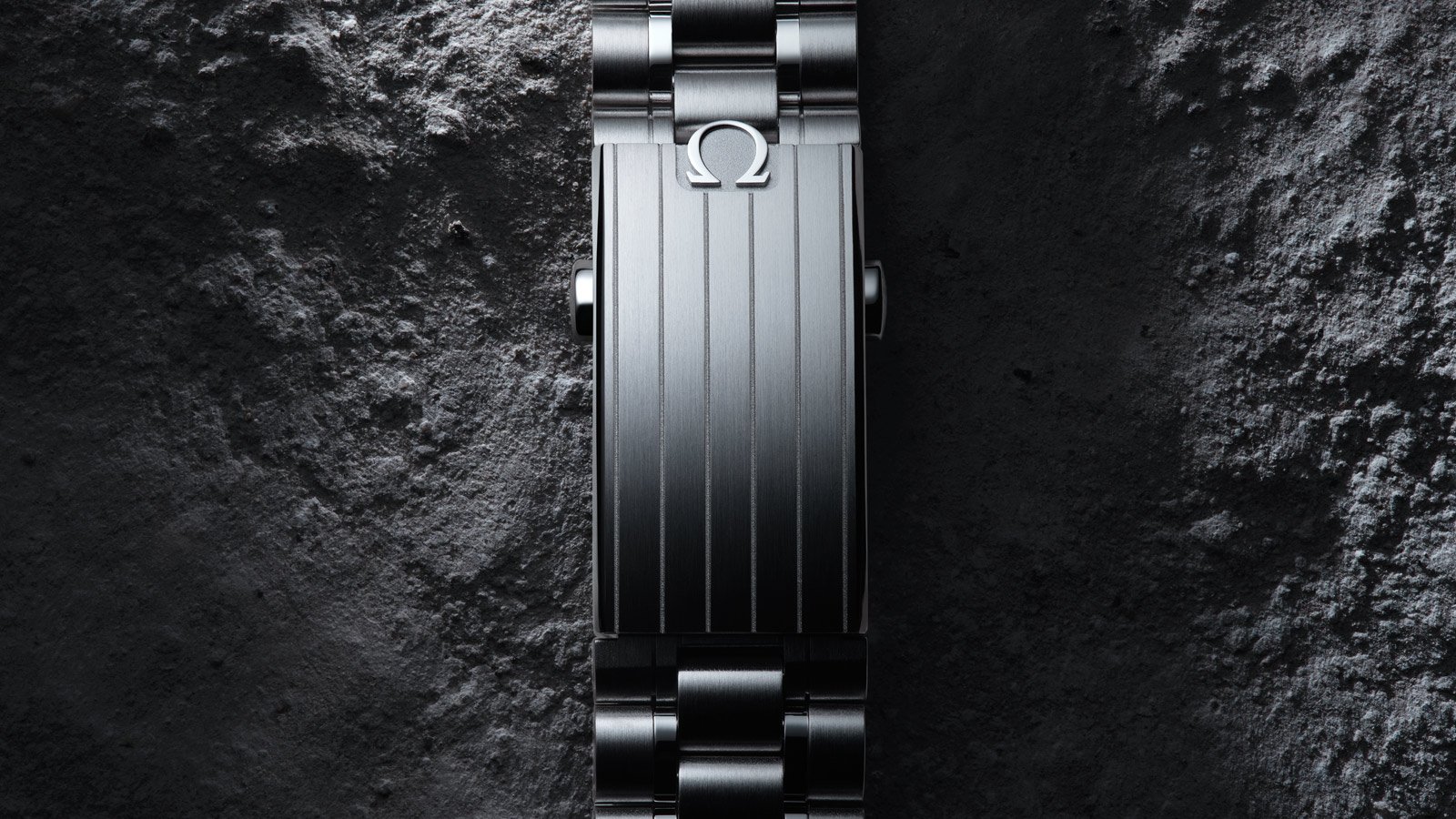
There have always been two types of the Speedmaster – the hesalite glass version or the sapphire crystal glass version. Hesalite, of course, was the material approved by NASA for space-bound missions and thus this is the option most preferred by avid Speedmaster watch fans who have followed its story from the beginning. The hesalite version is the one that comes with the matte-polished intermediate links on the bracelet, as well as a solid caseback. The more luxurious and dressier version is the sapphire crystal glass Speedmaster version, with polished intermediate links and an accompanying sapphire crystal glass exhibition caseback. All in all, the new bracelet design promises enhanced comfort on the wrist.
Whether you’re a fan of the traditional hesalite version of the latest Omega Speedmaster Professional Moonwatch 'Master Chronometer' or in favour of a gold iteration – if you’re going to update an existing Moonwatch – this is the model to do it with. The new and improved performance of the Calibre 3861, housed inside aesthetics that touch on landmarks of the brand’s past, is a pure joy to wear on the wrist.
To find out more about Omega you can read more of our guides where we cover the vintage Speemaster or all James Bond watches catalogued to see which iconic piece left a mark in history.